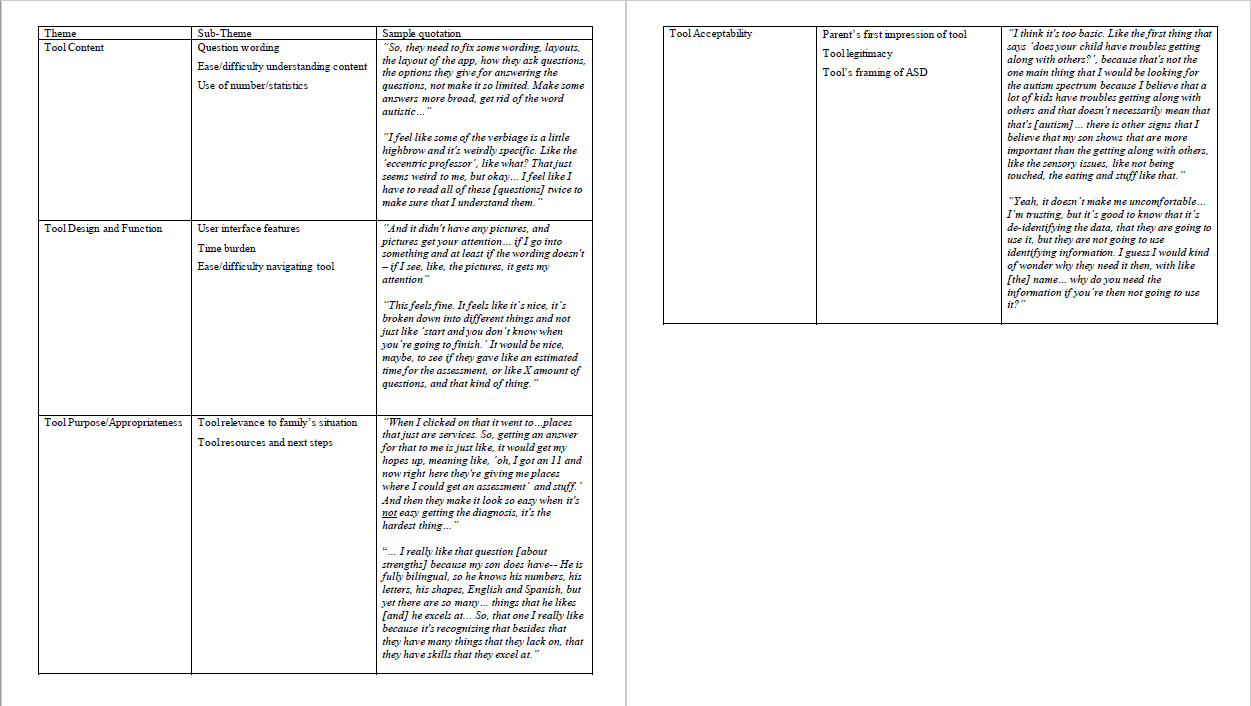Developmental and Behavioral Pediatrics: Autism
Developmental and Behavioral Pediatrics 7
608 - Design and Usability of mHealth Autism Screening Tools for Families Underserved in Autism Care: Parent Perspectives
Publication Number: 608.402

Luis A. Rivas Vazquez, BS (he/him/his)
Senior Research Assistant
Oregon Health & Science University
Beaverton, Oregon, United States
Presenting Author(s)
Background: Families of color and/or low-income families experience autism inequities, including delayed diagnosis of ASD. Mobile health (mHealth; mobile device-based) autism spectrum disorder (ASD) screening apps have the potential to improve these inequities. Use of mHealth tools for screening and identification of ASD is gaining prevalence, bringing clear benefits such as video content or instant interpretation of results. However, it is unclear whether current mHealth ASD screeners will actually reduce disparities or help those already advantaged in autism care. Understanding the perspectives of parents is imperative in ensuring mHealth screeners meet needs of diverse families and thereby reduce autism diagnostic disparities
Objective: To conduct qualitative interviews and user testing of mHealth ASD screening tools in parents of children of color and/or of low-income children, in order to assess usability and acceptability of mHealth ASD screening tools in this population
Design/Methods:
16 parents were recruited. To be included, parents had to (1) be English and/or Spanish speaking, (2) be low income and/or a parent of a child of color, and (3) have a child with high or low risk of ASD. We conducted brief telephone interviews to gauge parents’ general technology knowledge. We then conducted semi-structured qualitative interviews and in-person user testing, in which parents tested 1-2 mHealth ASD screening tools on their own mobile phone or tablet. Interviews and user testing were video-recorded, transcribed in the original language, and each transcript was coded by two study team members using QSR NVivo. Spanish transcripts were coded in the original language by bilingual team members. A phenomenological approach was used to develop key themes.
Results: Parents identified 4 themes and 11 subthemes describing benefits and challenges in using mHealth tools (Table). The four themes are tool content, tool design, tool purpose and appropriateness, and tool acceptability. Parents suggested improvements such as reducing the reading level of text (making it easier to read), improved question wording to clarify response options, and making tools shorter to fit in parents’ daily lives.
Conclusion(s): Parent perceptions of ASD screening tools varied, and reflected challenges with content, design/function, purpose/appropriateness, and acceptability. Parents’ lack of familiarity with mHealth applications and ASD, lack of familiarity with the use of mobile technology, and lower literacy may undergird these challenges. Designing mHealth tools based on the needs of diverse parents may improve equity and impact.
